JIDOKA delivers premium consultancy services that truly make the difference for our customers. Our consultants are always experienced professionals with a field of expertise and able to adopt themselves to any customer or project context.
If you need help with a specific phase in your IT project lifecycle, you can rely on our consultancy services.
We adopt an agile modelling mindset. We always start by finding out what our customer wants to achieve by the analysis effort. This gives us guidance for moving forward at a steady pace to the desired outcome.
Next we identify representatives for the following types of stakeholders. Principals (the people who buy your software), end-users (the people who interact with it) and insiders (people within your organisation that impact how your team works). Their active participation is critical for the success of the analysis effort.
During brainstorm sessions with stakeholders we get your requirements into the open. We avoid the common mistake of creating a magical “all encompassing model” from an ivory tower. Instead we document analysis artefacts in small increments, and will be asking feedback face-to-face from stakeholders as early as possible.
Our analysts use inclusive modeling techniques, which stakeholders can easily learn and adopt. The following are some of the techniques we use: business process modeling, user interface mock-ups and flow models, customer journey analysis, domain modeling, story mapping, … Effective requirements analysts understand how to apply a wide range of modeling techniques. The adopted techniques are dependant of the desired analysis outcome and of the culture of our customers.
The same analyst engages in both business and solution analysis avoiding hand-overs and potential communication bias. If required the analyst will pull an IT-architect to perform initial architecture envisioning. This is always advisable when a budget estimate is required.
Our analysts are eager to deliver the analysis artefacts customers need to make informed decisions and to get the development project on the road.
Our service
Modeling
Requirements capturing
Story mapping
Customer journey
Every application needs a good working backbone for delivering the best experience for the end user. That’s why most of our software factory projects are based on the Java programming language and the Spring Boot framework. It is proven that Java is one of the best and trusted programming languages to develop smoothly working back-ends with aid of the Spring Boot framework.
Every developer will go through a long termed training. They are craftsmen who work in a team and write quality software in a productive way (using the right languages, frameworks and libraries). Often they are the ones who cover the more complex pieces of software or for example perform code reviews for other colleagues. Therefore we hold clean code and test driven development in the highest regard.
Before releasing software the code goes through multiple layers of validation and testing. Every developer has the duty to test their code with unit testing. By testing sections of your code, it is more certain that smaller parts work within the software. This way integration testing would become much easier by testing the smaller parts first and then testing components together.
Our stack
Spring Boot
.NET Core
PHP
At JIDOKA, front-end development is closely related to back-end development. Most of our developers are full-stack, which makes the development of end-to-end features less prone to bugs and more efficient.
Depending of the project requirements and scope, our frontend developers will decide which framework would be most suitable for the application. We love to make single page applications with React, Angular or Vue.
During the frontend development process we hold performance tuning in high regard. If we see a chance to improve the performance of the application, we will gladly take it. Every chance we take to improve the application will reduce the final development cost instead of doing performance tuning at the end of the project.
Whenever a new feature is implemented, we always perform frontend testing before we deploy it to production. We have to be sure that every feature of your software works perfectly.
Our stack
Angular
React
Vue
Node.js
The two obvious leaders in mobile operating systems are Android and iOS. However, implementing two native apps simultaneously can quickly become expensive. Since different customers have different mobile needs and means, we support native, hybrid and cross-platform mobile development.
Native development implies the use of platform-specific programming languages and software development kits. Native apps can use 100 percent of the features available for a specific OS and corresponding devices. They usually perform better and enable completely custom, platform-specific UI implementation. This makes this approach perfect for consumer-facing app development. You want to consider native development when you are ready to invest more for a superior UI and performance. Your app requires access to hardware-related features such as gestures, geolocations, camera, Touch ID, …
Hybrid uses standard web technologies and tools to display web content directly inside an application instead of a standard browser. This way the apps will run comparably on all devices.
The hybrid approach is considered for apps that do not require heavy performance or interactions. The app has a generic UX with limited access to device’s hardware and OS-specific features.
Cross-platform approach employs a single toolset to deliver apps across multiple platforms. This approach aims to take each element of an app and adapts it to each specific platform. The result will have more OS specific UI customisation and improved performance compared to hybrid.
Which mobile strategy suits your needs depends on the purpose of your app and available resources. When in doubt we are very happy to provide you with professional guidance on this matter.
>Our stack
>Objective C
Swift
Kotlin
Java
Xamarin
Ionic
React Native
Flutter
The job of a project manager starts well before the actual project. When a new customer contacts us to share their ideas, we immediately start capturing the customer’s goals and assumptions, and we try to create the right expectations for the project.
Managing the customer’s expectations is all about scope, timing and budget. A JIDOKA project manager will monitor these three elements throughout the project, from the initial estimate all the way to the project closure phase. During this journey, he will monitor all possible risks, and devise strategies to mitigate them.
Of course, a project rarely goes 100% according to plan. Therefore it is the job of the project manager to keep an open line of communication with our customers, in order to keep successfully managing their expectations.
Furthermore, the project manager will also keep the management informed of the progress of the project. With this information, the management team can help, support and advise and as a result, they are not faced with unforeseen surprises if any problems arise over the course of the project. Lastly, the project manager will keep the team focused. A motivated and focused team produces better software and makes fewer mistakes, which improves quality, speeds up delivery and saves development costs.
The importance of classical product innovations has been reduced in favour of new business models enabled by new technology.
Digital innovation is an approach that helps our customers to make rapid change by using proven digital technology and IT trends to improve services, products and processes. We help our customers to explore the potential of new technologies by applying them to proof-of-concept and proof-of-value prototypes. We often start this exploration by fine tuning your use case and value proposal.
Additionally, we can help you explore new business model patterns. Osterwalder and Pigneur have provided us with new patterns as multi-sided platforms, the long tail, freemium, … The important point is that it’s not a question of innovating for innovation’s sake. Instead JIDOKA wants to help you respond better to (unmet) user needs or to provide a stronger customer value proposition.
Our service
Blockchain
AR/VR
Tech guidance
AI
A good design is usually the basis of a good application. We also take technical feasibility into account during the design phase. It is unnecessary to create difficult-to-implement design for development. We hold realism in high regard.
Based on the requirements, we create designs for web, mobile, applications and so on.
During the user experience phase we focus on optimizing the usability and structure of your application. It’s important to first determine a user-friendly flow within your application before visualizing your designs in detail. To test and visualise the page structure we create wireframes, sketches so to speak. Those wireframes give our clients an idea of how their application could look like and give a basic idea of the user flow.
Next, we make the wireframes come alive during the user interface phase. We take our clients styling guidelines into account when creating the designs in detail. To deliver and present the final designs, we construct a clickable prototype with tools like Invision. A prototype is the best method to present the final designs to our clients.
During all our phases we always keep in touch with our clients. We don’t design something on our own, but together to find the best design solution for you.
Our service
Mobile Design
Web Design
Wireframes
Design mockups
For DevOps we try to ensure that there is a system that makes it as easy as possible to know at all times the ‘health’ of different branches. It’s easier to release versions of an application which makes it possible to deploy a (or any other) version of such an application to an environment.
Thanks to our code review process, automatic deployment to a test environment is ensured whenever a branch merge occurs. We mostly do this through Jenkins (shared libraries and pipelines) and use Ansible to deploy the released version in Nexus to an Amazon machine.
Currently we are working to convert this process to Kubernetes where we build Docker images through Jenkins that will then be deployed on Amazon EKS.
Models just good enough for the task at hand.
Create a working backbone for your application.
Bring your application to life with the latest frontend frameworks.
Create a mobile solution for your project.
Keep your team focused, your management informed and your customer satisfied.
Discover and experiment with new technologies.
Bring structure and create your ideas into interactive designs.
Automatically deploy features more quickly and consistently to an environment with little human interaction.
Analysis
Backend Development
Frontend Development
Mobile Development
Project Management
IT Innovation
UX/UI Design
DevOps
We adopt an agile modelling mindset. We always start by finding out what our customer wants to achieve by the analysis effort. This gives us guidance for moving forward at a steady pace to the desired outcome.
Next we identify representatives for the following types of stakeholders. Principals (the people who buy your software), end-users (the people who interact with it) and insiders (people within your organisation that impact how your team works). Their active participation is critical for the success of the analysis effort.
During brainstorm sessions with stakeholders we get your requirements into the open. We avoid the common mistake of creating a magical “all encompassing model” from an ivory tower. Instead we document analysis artefacts in small increments, and will be asking feedback face-to-face from stakeholders as early as possible.
Our analysts use inclusive modeling techniques, which stakeholders can easily learn and adopt. The following are some of the techniques we use: business process modeling, user interface mock-ups and flow models, customer journey analysis, domain modeling, story mapping, … Effective requirements analysts understand how to apply a wide range of modeling techniques. The adopted techniques are dependant of the desired analysis outcome and of the culture of our customers.
The same analyst engages in both business and solution analysis avoiding hand-overs and potential communication bias. If required the analyst will pull an IT-architect to perform initial architecture envisioning. This is always advisable when a budget estimate is required.
Our analysts are eager to deliver the analysis artefacts customers need to make informed decisions and to get the development project on the road.
Our service
Modeling
Requirements capturing
Story mapping
Customer journey
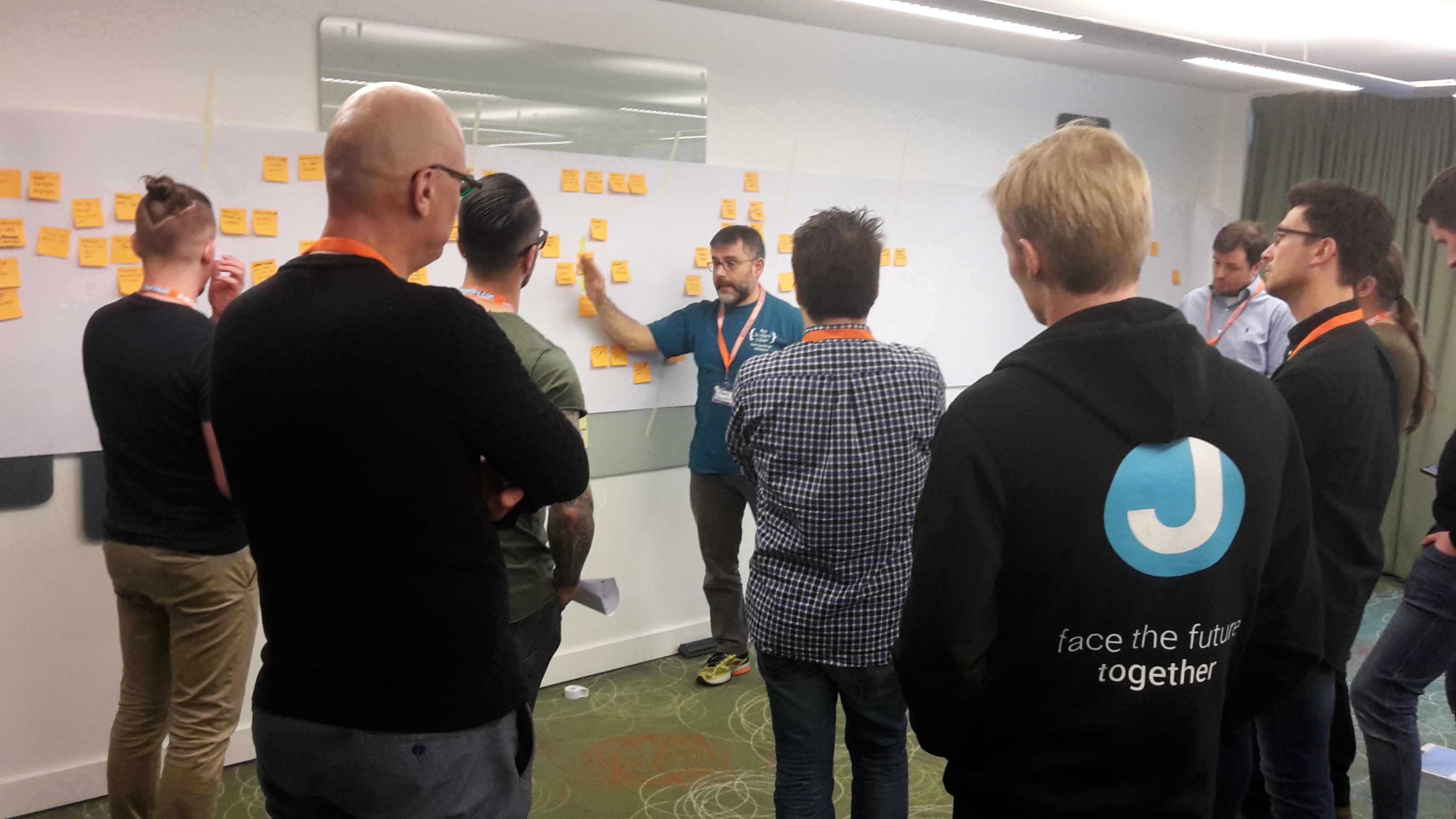
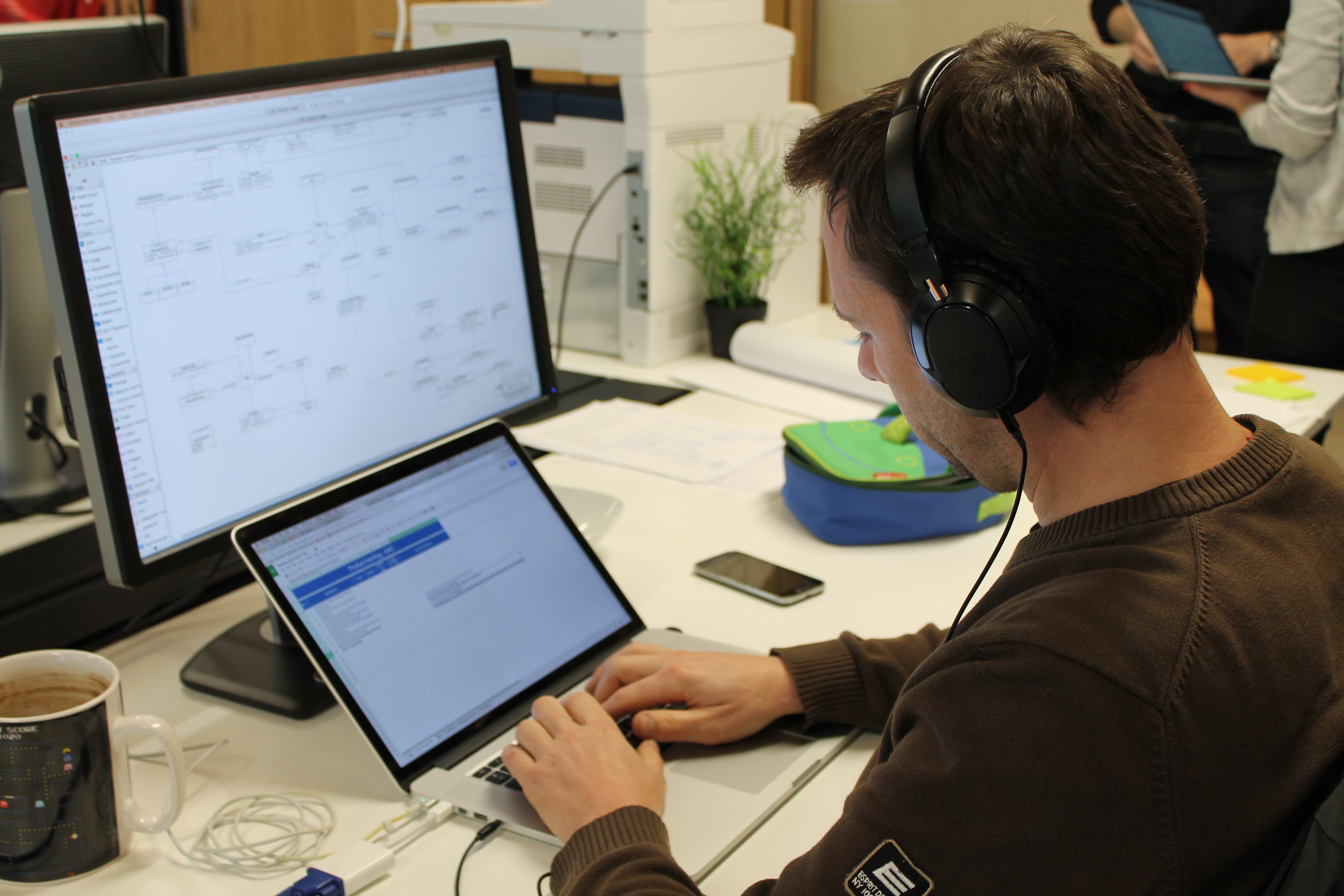
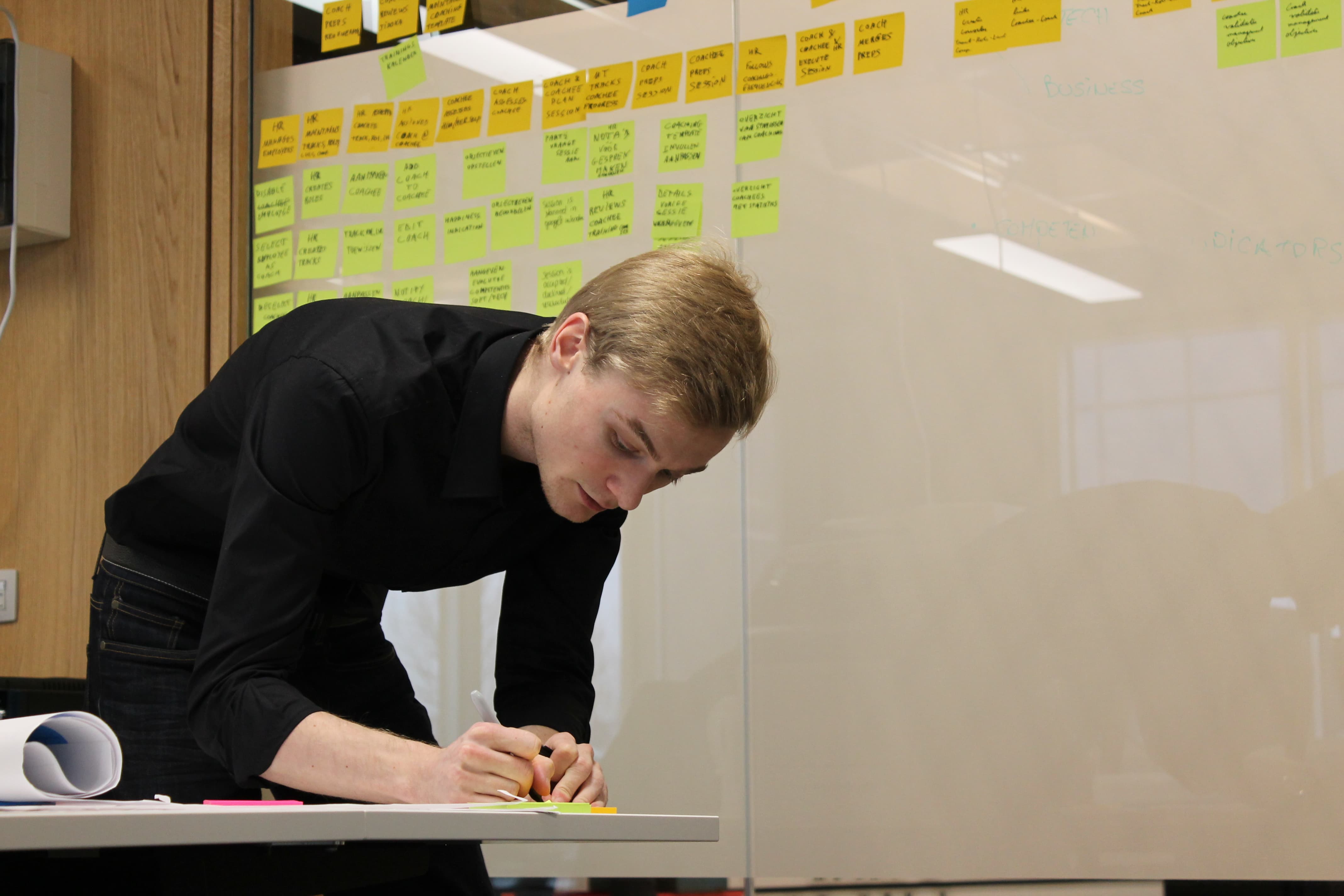
Every application needs a good working backbone for delivering the best experience for the end user. That’s why most of our software factory projects are based on the Java programming language and the Spring Boot framework. It is proven that Java is one of the best and trusted programming languages to develop smoothly working back-ends with aid of the Spring Boot framework.
Every developer will go through a long termed training. They are craftsmen who work in a team and write quality software in a productive way (using the right languages, frameworks and libraries). Often they are the ones who cover the more complex pieces of software or for example perform code reviews for other colleagues. Therefore we hold clean code and test driven development in the highest regard.
Before releasing software the code goes through multiple layers of validation and testing. Every developer has the duty to test their code with unit testing. By testing sections of your code, it is more certain that smaller parts work within the software. This way integration testing would become much easier by testing the smaller parts first and then testing components together.
Our stack
Spring Boot
.NET Core
PHP
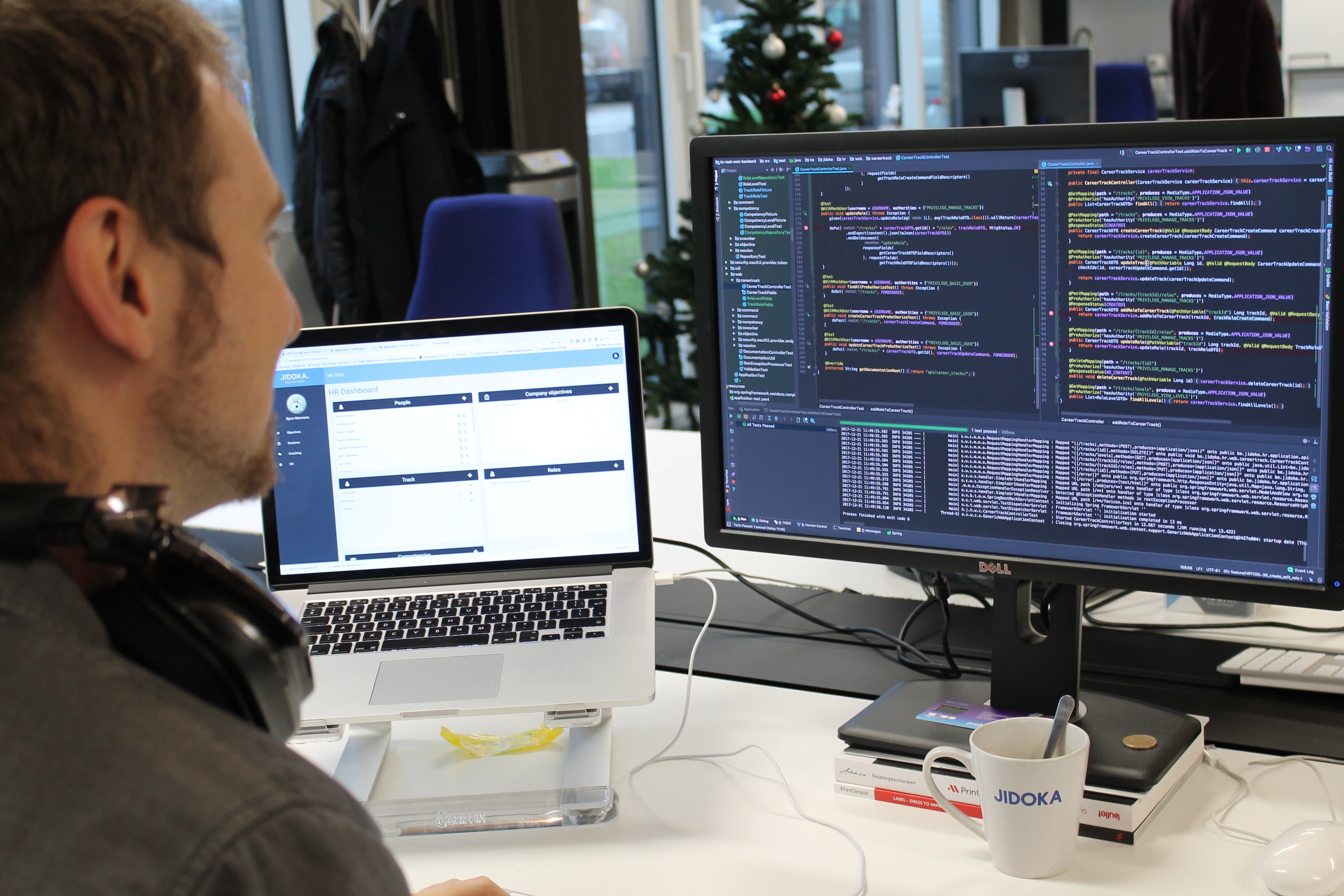
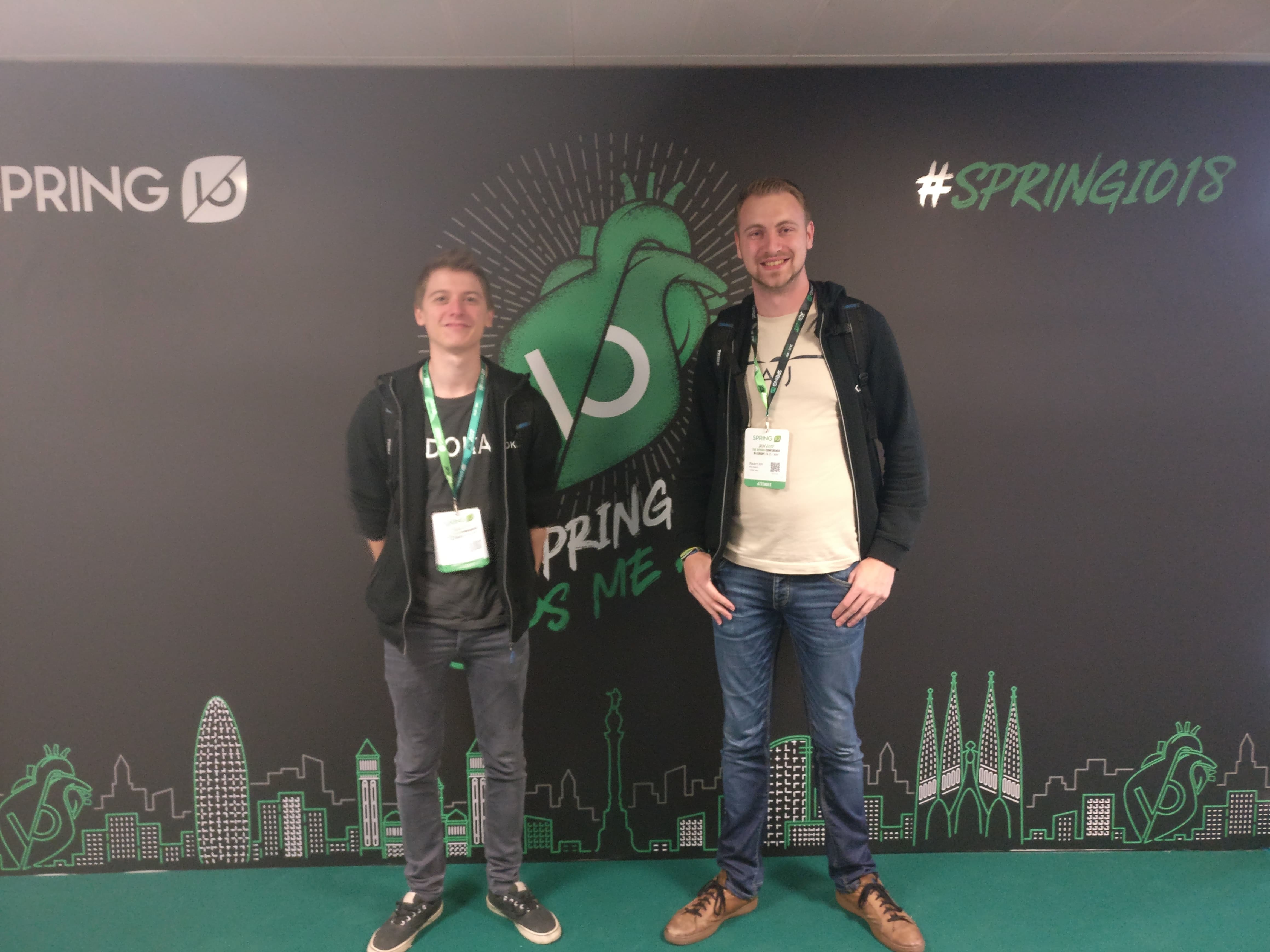
At JIDOKA, front-end development is closely related to back-end development. Most of our developers are full-stack, which makes the development of end-to-end features less prone to bugs and more efficient.
Depending of the project requirements and scope, our frontend developers will decide which framework would be most suitable for the application. We love to make single page applications with React, Angular or Vue.
During the frontend development process we hold performance tuning in high regard. If we see a chance to improve the performance of the application, we will gladly take it. Every chance we take to improve the application will reduce the final development cost instead of doing performance tuning at the end of the project.
Whenever a new feature is implemented, we always perform frontend testing before we deploy it to production. We have to be sure that every feature of your software works perfectly.
Our stack
Angular
React
Vue
Node.js
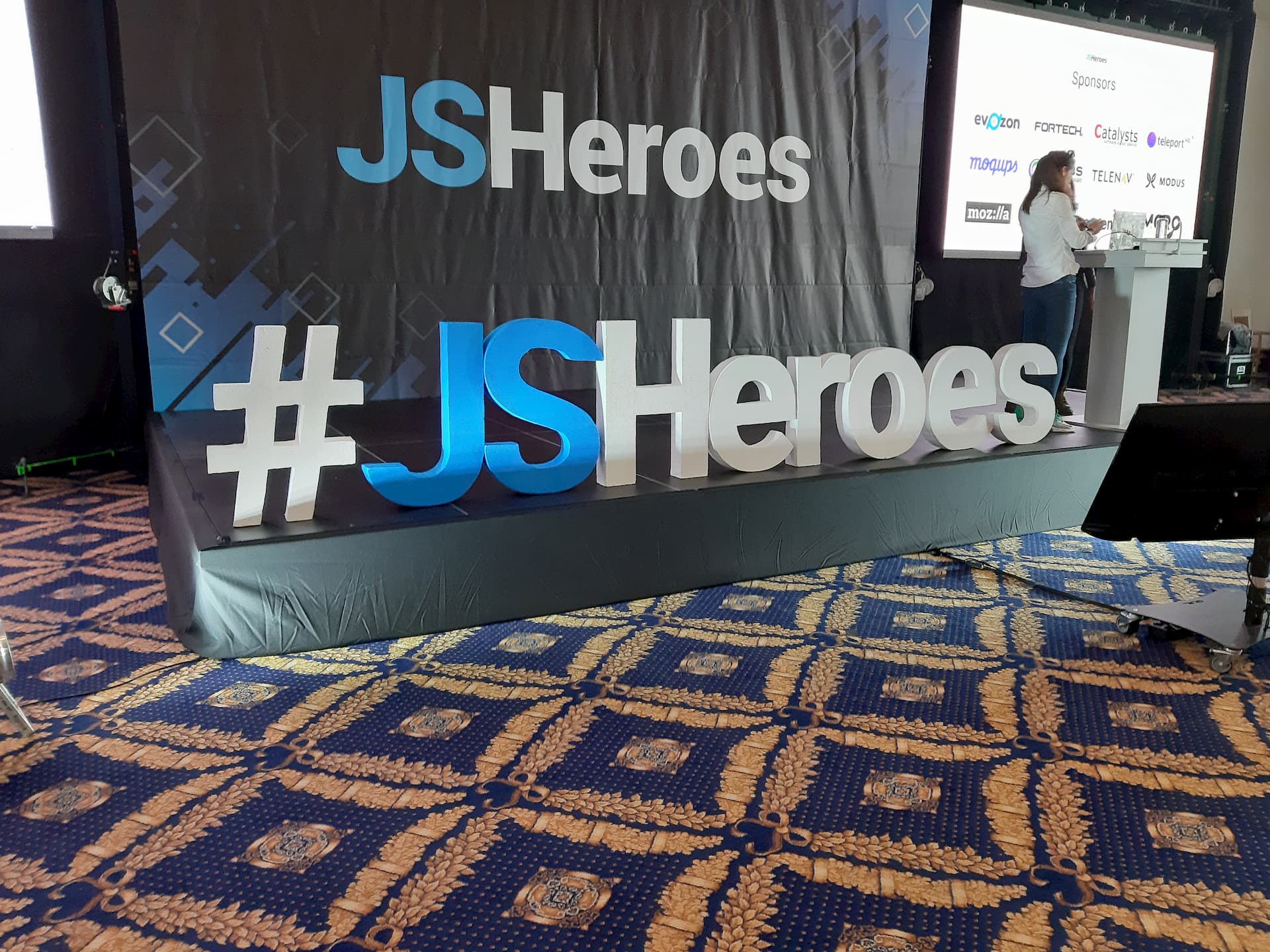
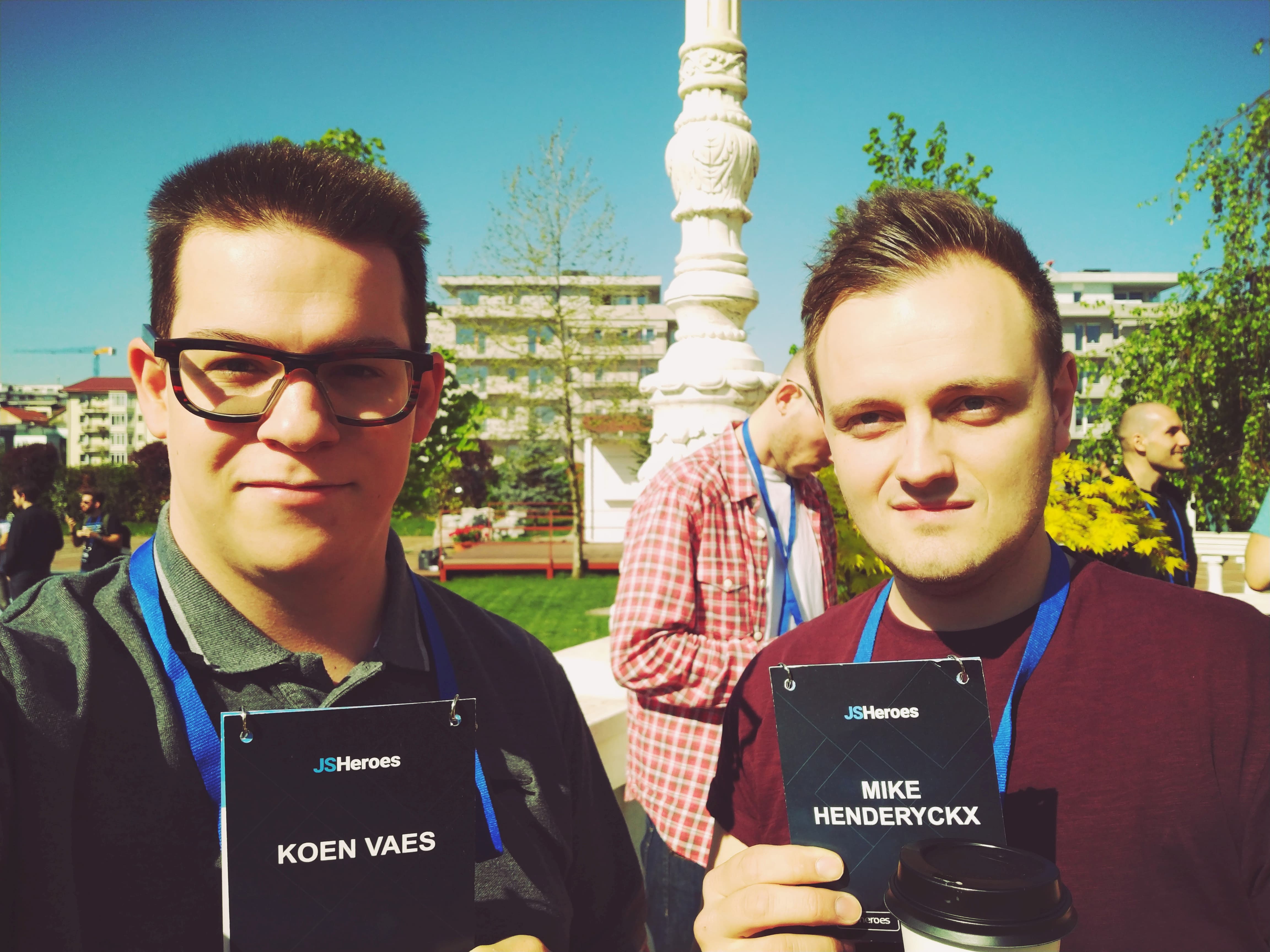
The two obvious leaders in mobile operating systems are Android and iOS. However, implementing two native apps simultaneously can quickly become expensive. Since different customers have different mobile needs and means, we support native, hybrid and cross-platform mobile development.
Native development implies the use of platform-specific programming languages and software development kits. Native apps can use 100 percent of the features available for a specific OS and corresponding devices. They usually perform better and enable completely custom, platform-specific UI implementation. This makes this approach perfect for consumer-facing app development. You want to consider native development when you are ready to invest more for a superior UI and performance. Your app requires access to hardware-related features such as gestures, geolocations, camera, Touch ID, …
Hybrid uses standard web technologies and tools to display web content directly inside an application instead of a standard browser. This way the apps will run comparably on all devices.
The hybrid approach is considered for apps that do not require heavy performance or interactions. The app has a generic UX with limited access to device’s hardware and OS-specific features.
Cross-platform approach employs a single toolset to deliver apps across multiple platforms. This approach aims to take each element of an app and adapts it to each specific platform. The result will have more OS specific UI customisation and improved performance compared to hybrid.
Which mobile strategy suits your needs depends on the purpose of your app and available resources. When in doubt we are very happy to provide you with professional guidance on this matter.
Our stack
Objective C
Swift
Kotlin
Java
Xamarin
Ionic
React Native
Flutter

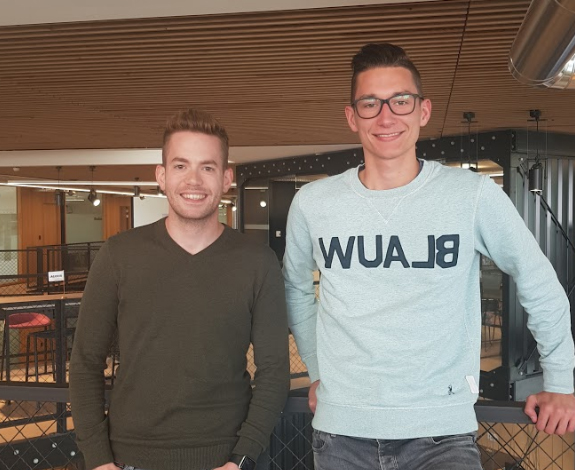
The job of a project manager starts well before the actual project. When a new customer contacts us to share their ideas, we immediately start capturing the customer’s goals and assumptions, and we try to create the right expectations for the project.
Managing the customer’s expectations is all about scope, timing and budget. A JIDOKA project manager will monitor these three elements throughout the project, from the initial estimate all the way to the project closure phase. During this journey, he will monitor all possible risks, and devise strategies to mitigate them.
Of course, a project rarely goes 100% according to plan. Therefore it is the job of the project manager to keep an open line of communication with our customers, in order to keep successfully managing their expectations.
Furthermore, the project manager will also keep the management informed of the progress of the project. With this information, the management team can help, support and advise and as a result, they are not faced with unforeseen surprises if any problems arise over the course of the project. Lastly, the project manager will keep the team focused. A motivated and focused team produces better software and makes fewer mistakes, which improves quality, speeds up delivery and saves development costs.
The importance of classical product innovations has been reduced in favour of new business models enabled by new technology.
Digital innovation is an approach that helps our customers to make rapid change by using proven digital technology and IT trends to improve services, products and processes. We help our customers to explore the potential of new technologies by applying them to proof-of-concept and proof-of-value prototypes. We often start this exploration by fine tuning your use case and value proposal.
Additionally, we can help you explore new business model patterns. Osterwalder and Pigneur have provided us with new patterns as multi-sided platforms, the long tail, freemium, … The important point is that it’s not a question of innovating for innovation’s sake. Instead JIDOKA wants to help you respond better to (unmet) user needs or to provide a stronger customer value proposition.
Our service
Blockchain
AR/VR
Tech guidance
AI
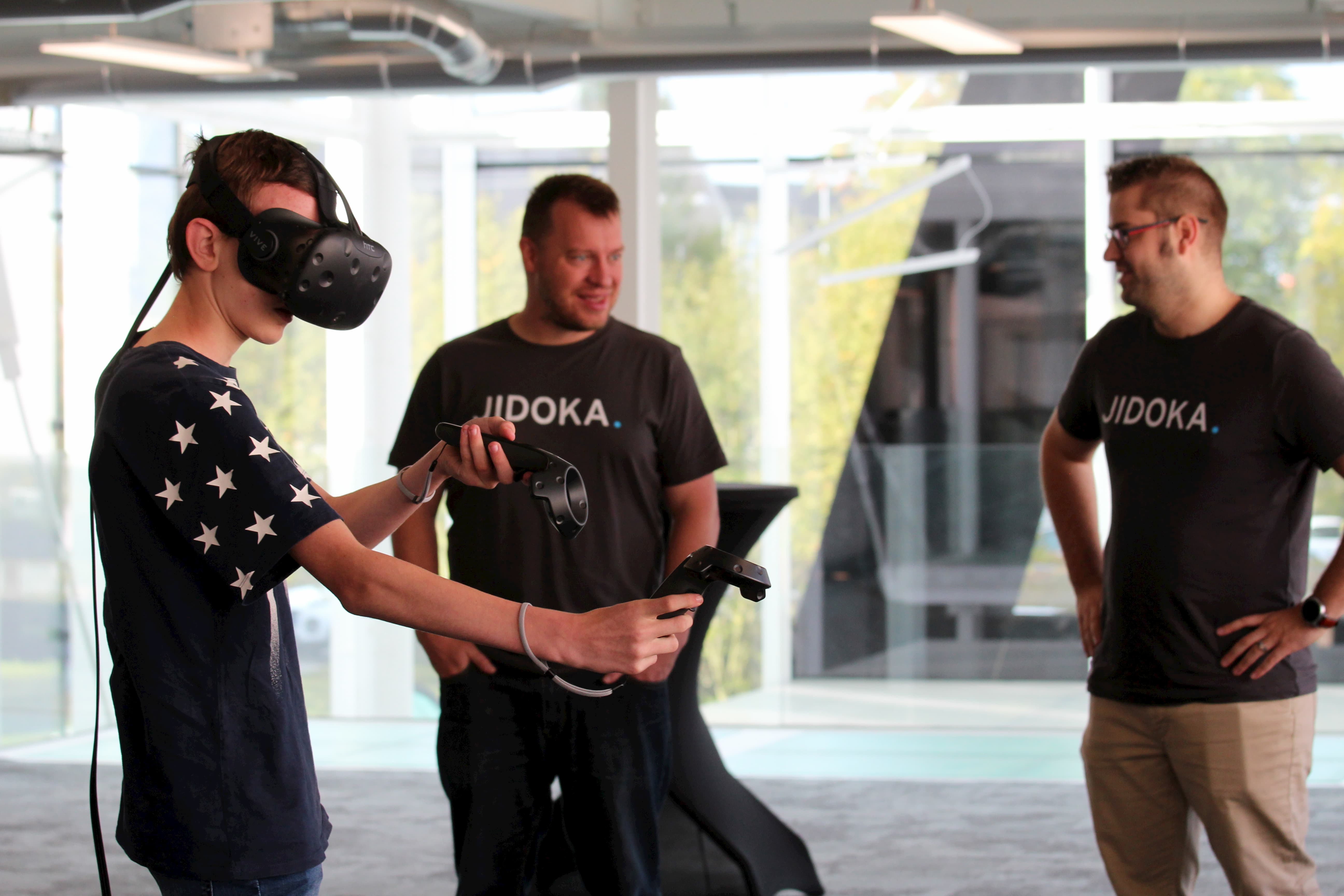
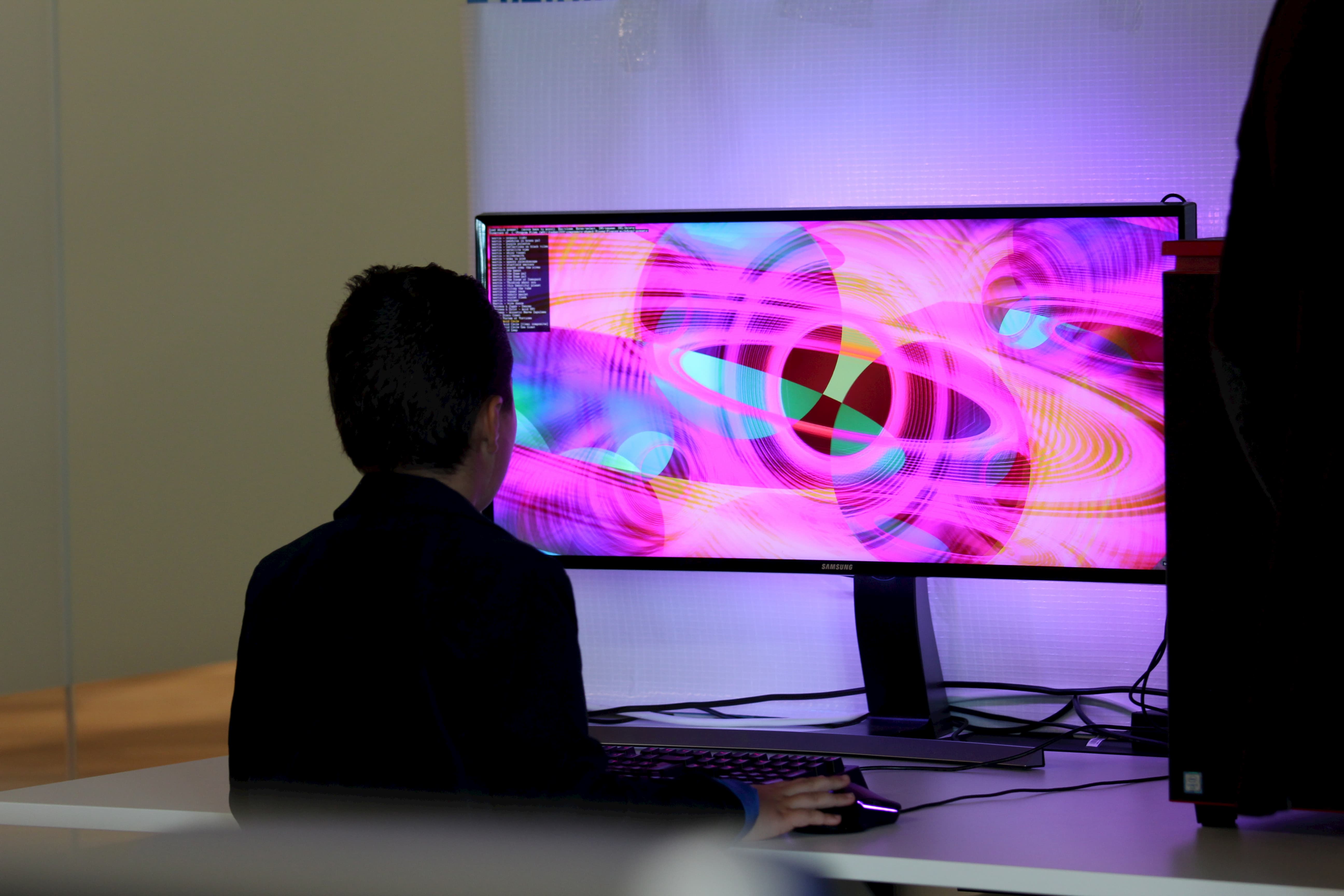
A good design is usually the basis of a good application. We also take technical feasibility into account during the design phase. It is unnecessary to create difficult-to-implement design for development. We hold realism in high regard.
Based on the requirements, we create designs for web, mobile, applications and so on.
During the user experience phase we focus on optimizing the usability and structure of your application. It’s important to first determine a user-friendly flow within your application before visualizing your designs in detail. To test and visualise the page structure we create wireframes, sketches so to speak. Those wireframes give our clients an idea of how their application could look like and give a basic idea of the user flow.
Next, we make the wireframes come alive during the user interface phase. We take our clients styling guidelines into account when creating the designs in detail. To deliver and present the final designs, we construct a clickable prototype with tools like Invision. A prototype is the best method to present the final designs to our clients.
During all our phases we always keep in touch with our clients. We don’t design something on our own, but together to find the best design solution for you.
Our service
Mobile Design
Web Design
Wireframes
Design mockups

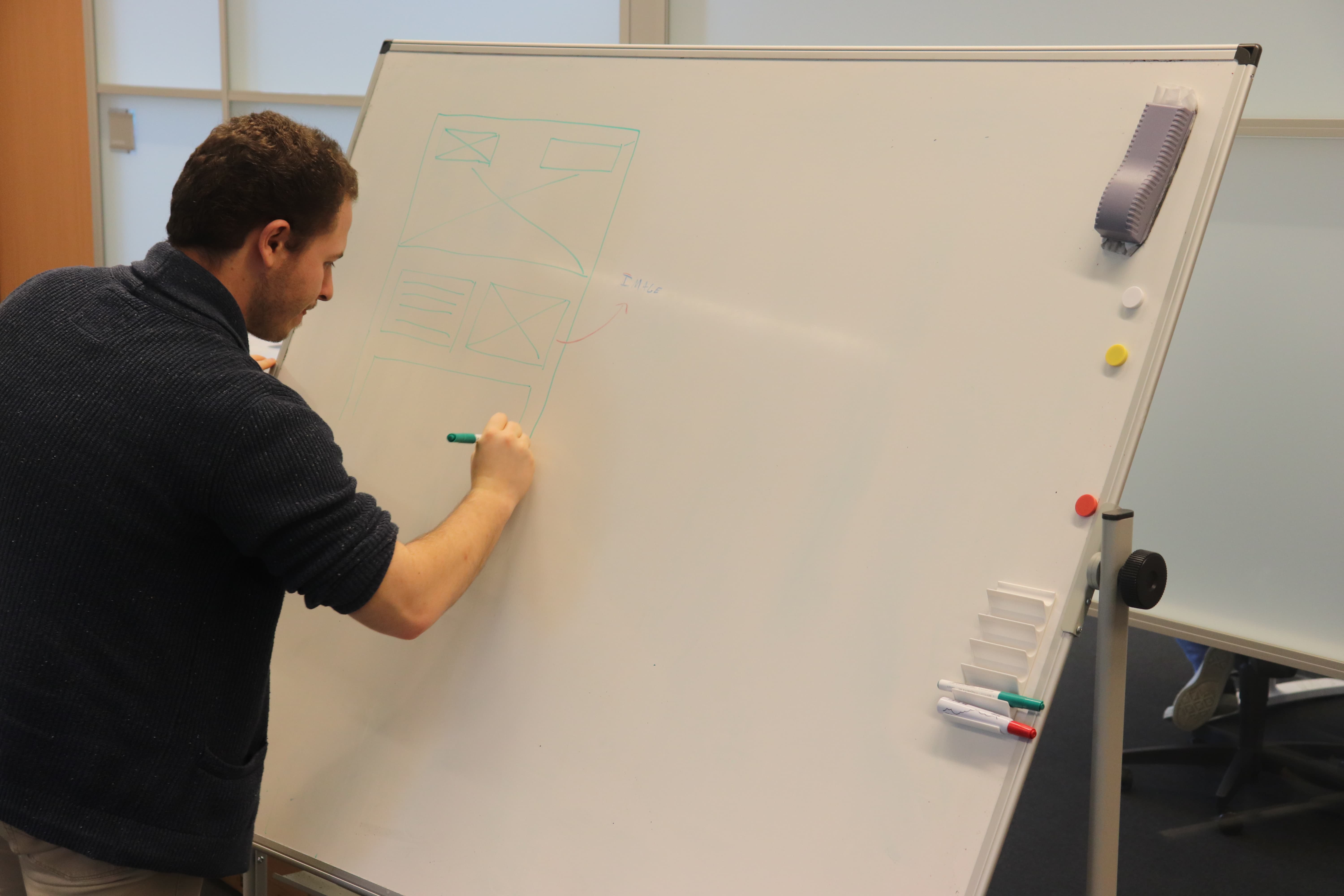
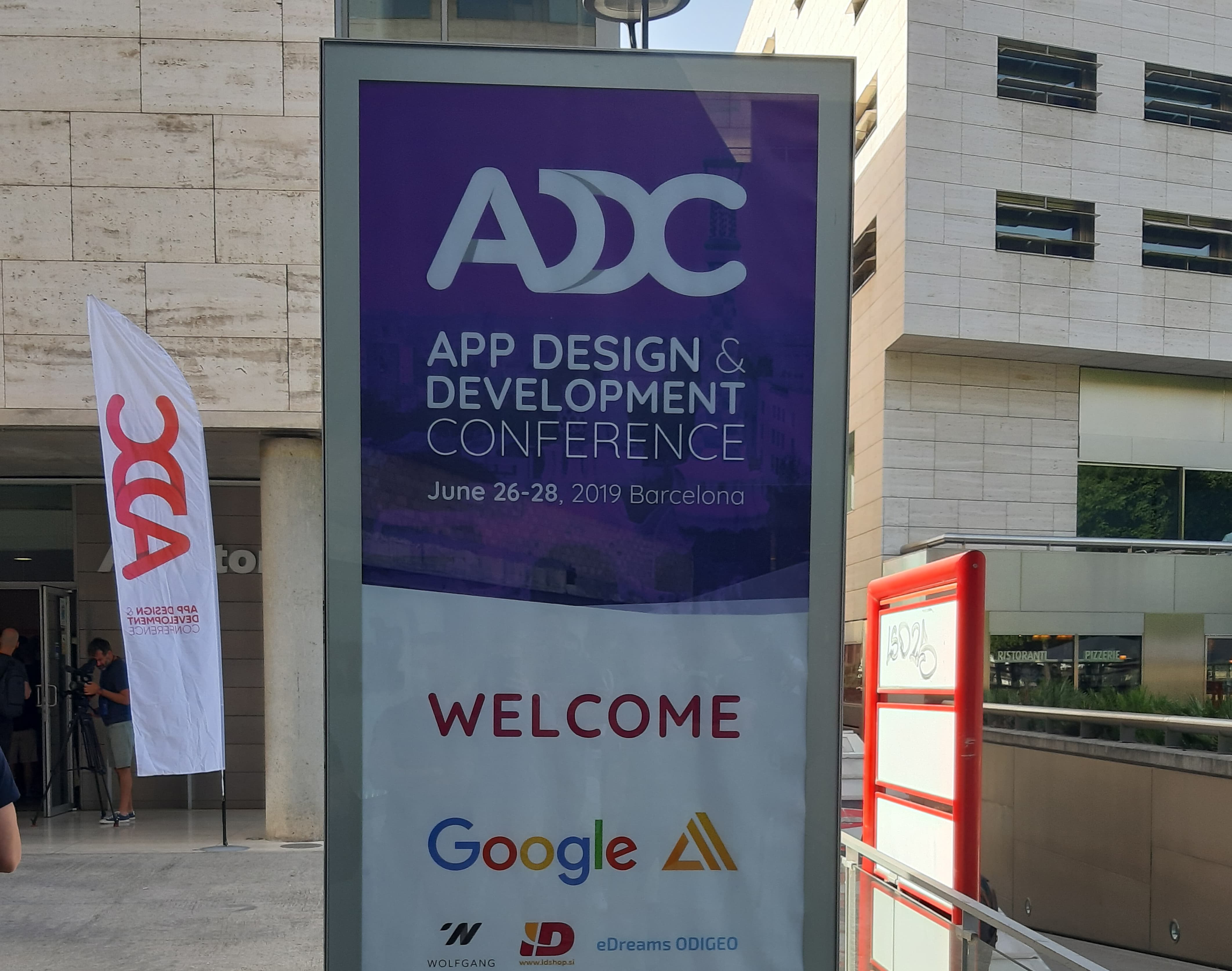
For DevOps we try to ensure that there is a system that makes it as easy as possible to know at all times the ‘health’ of different branches. It’s easier to release versions of an application which makes it possible to deploy a (or any other) version of such an application to an environment.
Thanks to our code review process, automatic deployment to a test environment is ensured whenever a branch merge occurs. We mostly do this through Jenkins (shared libraries and pipelines) and use Ansible to deploy the released version in Nexus to an Amazon machine.
Currently we are working to convert this process to Kubernetes where we build Docker images through Jenkins that will then be deployed on Amazon EKS.
Our service
Web Design
Mobile Design
Wireframes
Design mockups
Customer journey
Please contact Patrick Hellemans directly or fill in the online form.